Important PUR Collections
Type Collections in the Arthur Fungarium
A type specimen is a specimen, or set of specimens, on which a botanist or mycologist based their description of a new species. The PUR has one of the largest type collections of rust fungi in the world, with 3,243 type specimens digitalized as part of the JSTOR Global Plants Initiative (institutional access required). Click here for more information on PUR type statistics.
The Oldest Specimen in the Purdue University Herbaria
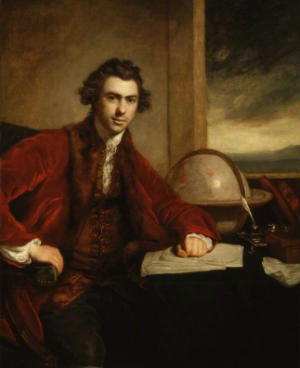
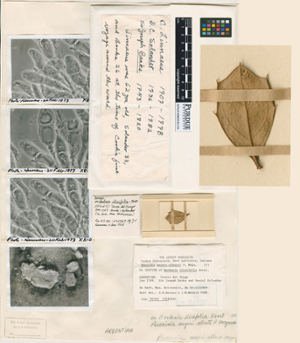
The oldest specimen at Purdue was collected in 1769 in Tierra Del Fuego at the southern tip of South America. During the first voyage of Captain James Cook's ship "The Endeavor", two Englishmen, Sir Joseph Banks and Dr. Daniel Carl Solander, collected 125 plant specimens at Tierra Del Fuego, along the southern tip of South America. These collections were initially kept at The British Museum, London, England, but specimen exchanges eventually brought some of the materials to the United States National Museum of Natural History in Washington, D.C. One collection of a holly barberry, Berberis ilicifolia, was taken during a treacherous expedition, with the party trapped overnight on a mountainside in a blizzard, resulting in the death of two men. Upon further examination in 1970, it was determined that the specimen had been infected with a rust fungus, Puccinia meyeri-alberti, at the time of its collection 200 years before. The infected material was retained as a separate specimen and is now stored in the PUR.
George Washington Carver
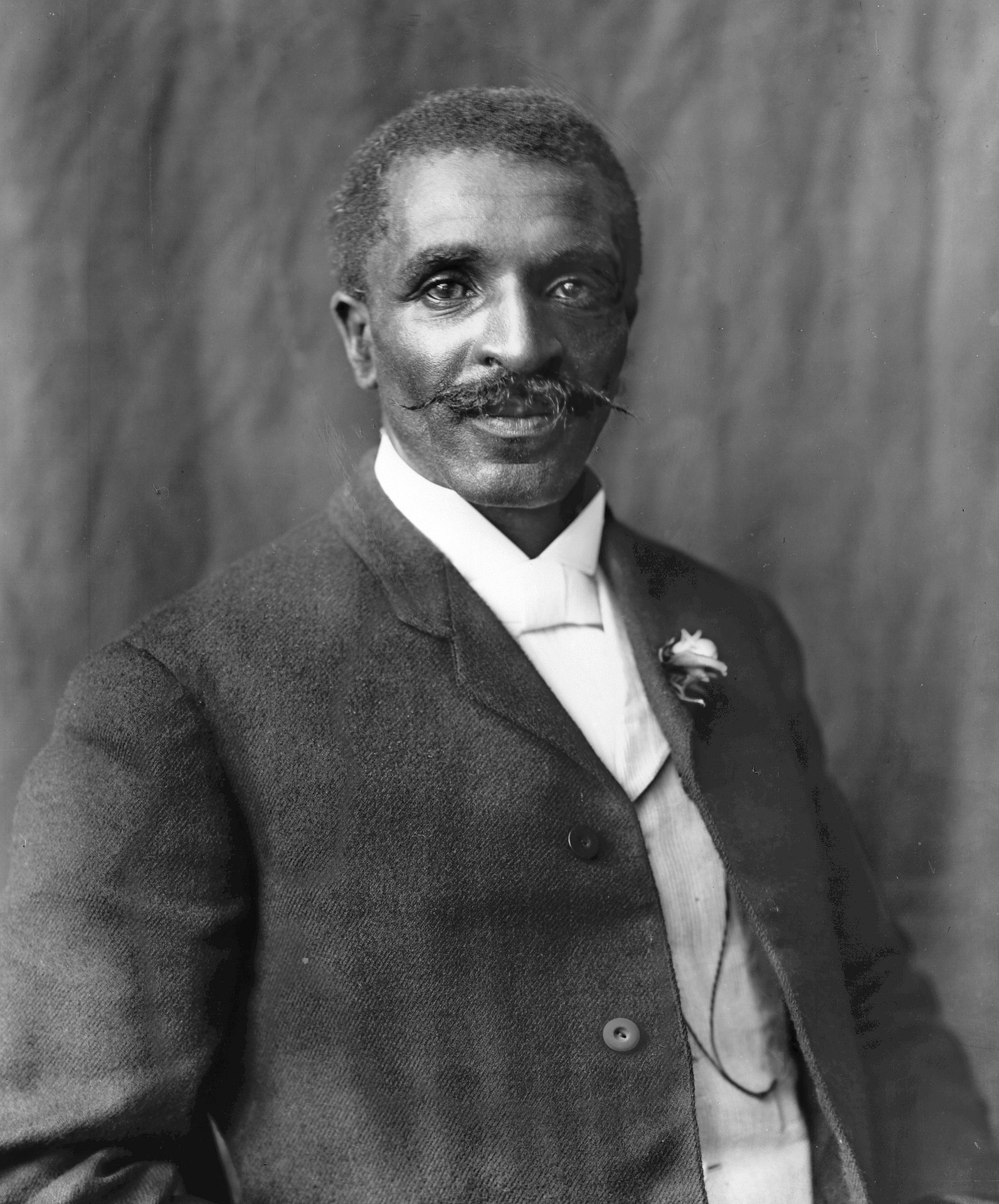
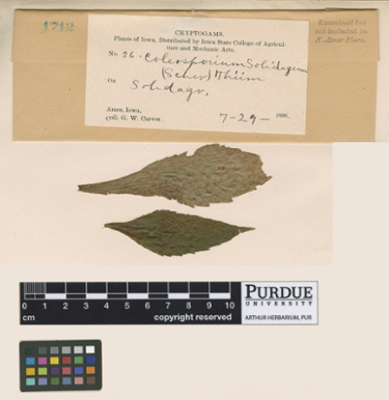
George. W. Carver was an American scientist, botanist, educator, and inventor. Carver is renowned for his research into, and promotion of, alternative crops to cotton, such as peanuts, soybeans, and sweet potatoes, which also aided nutrition for farm families.
The PUR holds over 70 rust specimens collected by Carver mainly from Ames, Iowa, and Tuskegee, Alabama with collection dates ranging from 1892–1935.
Purdue University further recognizes Carver's influence on future professors of higher education by offering the George Washington Carver Fellowship to prospective doctoral students from historically black colleges and universities, Hispanic-serving institutions, or tribal colleges.
Dr. John Luverne Cunningham rust collection at the PUR

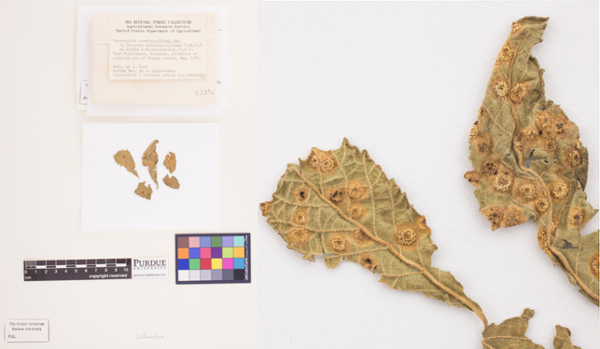
In late 2014, the Arthur Fungarium (PUR) was gifted Dr. John Luverne Cunningham's rust collection from the U.S. National Fungus Collection, Beltsville (BPI). These are rust specimens, mostly collected between 1962–1969, from different parts of the U.S.A. and Dominica. The collection is composed of two types of material, prepared fungal exsiccati packeted in small envelopes, and numerous specimens still wrapped in newspapers, which we are cataloging, packeting and mounting. Cunningham received his PhD from the University of Wisconsin, Madison, in 1961. The topic of his thesis was "Relationship of zoospores of Aphanomyces euteiches to the host root". Cunningham worked at the USDA, U.S. National Fungus Collections, in Beltsville, Maryland for much of his career and was primarily interested in the collection and study of rust fungi, though he also investigated new mycological methods and techniques. Among his collections is material apparently gathered for a monograph of rust fungal floras of countries previously part of the territories of the British West Indies, specifically Dominica. Cunningham was also collected specimens of the genus Tuberculina, which is a fungal parasite of rust fungi.
Norman Borlaug
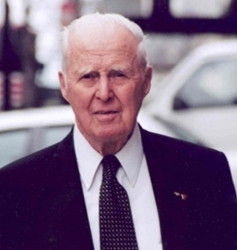
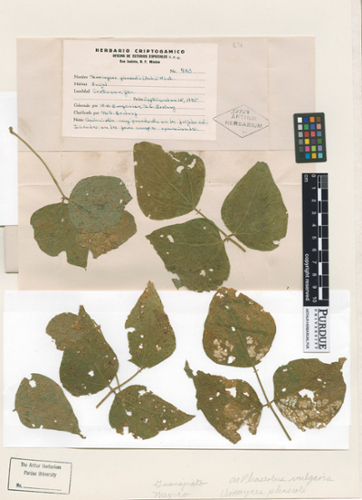
Nobel Peace Prize laureate Norman Borlaug worked throughout his life to feed a hungry world. During the 1940s and 1950s, Borlaug helped transform agricultural production in Mexico.
In 1945, he collected bean specimens from Mexico with rust fungal infections. One of Borlaug collections is stored in the PUR.
McCain JW, Hennen JF. 1982. The Arthur Herbarium centennial: 100 years of uredinology in Indiana and the Great Lakes Region. Proceedings of the Indiana Academy of Science 92: 389–395. Link here.
